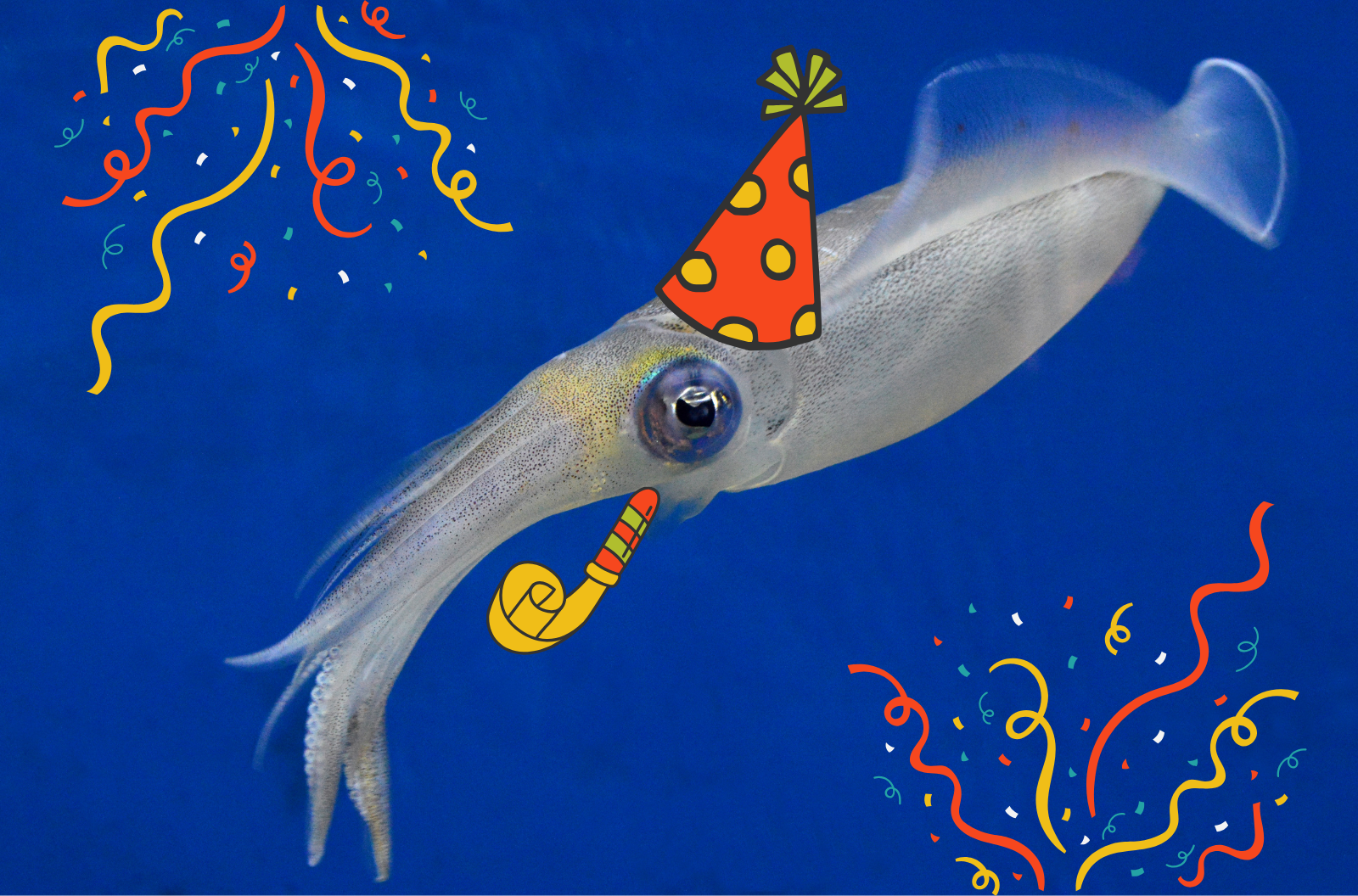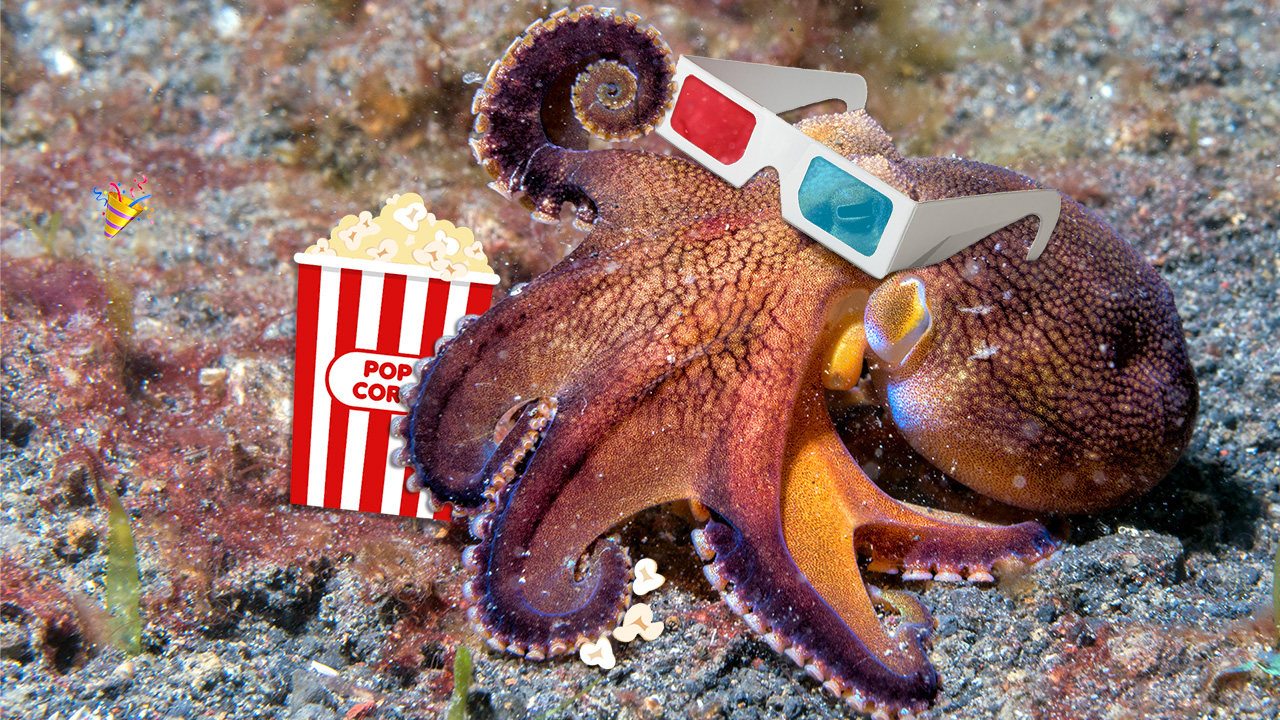Grade Level
All
minutes
1- 2 hrs
subject
Life Science
Activity Type:
After School Activity, family activities, informal education, STEAM
For ten years, Science Friday has hosted Cephalopod Week, and along the way, we’ve partnered with science centers, museums, local radio stations, aquariums, and amazing gathering spaces to highlight these eight-armed creatures and the outstanding, octopus-obsessed people who study and care for them. Now, we’re inviting YOU to be part of the team. This toolkit contains ideas for events, STEAM projects to try, books to read, and artwork to help you create ex-ceph-tional activities for your location—wherever that may be. Mix and match these materials to build the perfect program for your learners!
Got questions? Need disability or language accommodations? Send us an email at educate@sciencefriday.com.
Tentacle Tales: Cephalopod-Inspired Stories
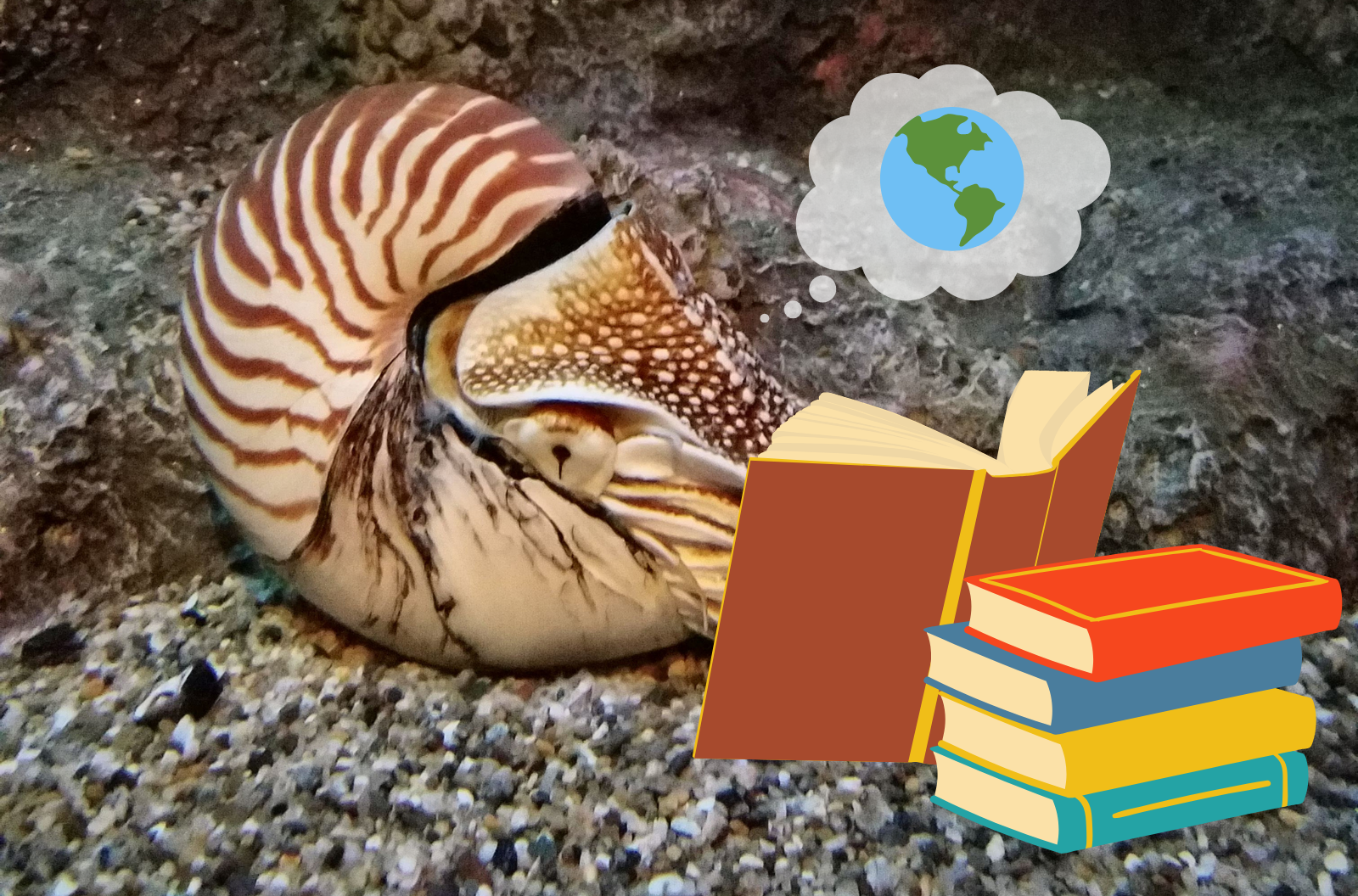
What program would be complete without a good book (or eight)? Certainly not Cephalopod Week. As part of your programming, why not host a storytime, read-a-thon, or other literary experience?
Great Cephalopod Books For Kids
There are so many wonderful books about cephalopods and their ocean friends. Not sure what books to share with your learners? No problem. Science Friday is here to help. We reached out to some of our favorite children’s book authors for recommendations. Jennifer Swanson is a scientist, educator, children’s book author, and co-host of the Solve It! for Kids podcast. Ruth Spiro has authored over thirty children’s books and her work has been praised by Popular Science, Working Mother, and the National Science Teaching Association.
- Hello, World! Ocean Life by Jill McDonald: All young children love to play in the waves at the beach. This board book teaches them all about oceans and the creatures and plants that live there. (Ages 1-3)
- Deep in the Ocean: A Board Book by Lucie Brunellière: From the glittering surface of the sea to the darkness of the abyss, this book will take readers on a bewitching journey through fascinating waters—where some are warm, colorful, and crowded with sea creatures, and others are mysterious and turbulent. (Ages 3-5)
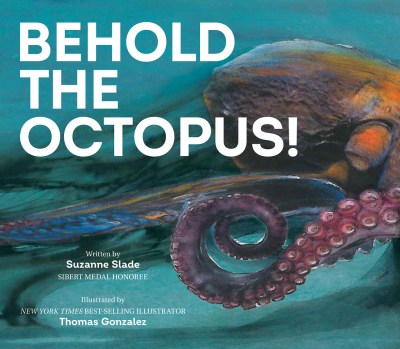 Behold the Octopus by Suzanne Slade, illustrated by Thomas Gonzalez: Discover the fascinating features of the glorious octopus, such as lights that attract prey, legs that walk on land, and the ability to change color and shape to match their surroundings and even masquerade as other animals. (Ages 4-8)
Behold the Octopus by Suzanne Slade, illustrated by Thomas Gonzalez: Discover the fascinating features of the glorious octopus, such as lights that attract prey, legs that walk on land, and the ability to change color and shape to match their surroundings and even masquerade as other animals. (Ages 4-8)- Octopus Acrobatics by Sue Fliess, illustrated by Gareth Lucas: Though octopuses live in every ocean and along every US coast, you may never catch a glimpse of one in the wild. With rhyming text and colorful, vibrant illustrations this fact-filled book is a perfect choice for read-alouds. (Ages 4-8)
- The Den That Octopus Built by Randi Sonenshine, illustrated by Anne Hunter: The solitary and ingenious octopus is a master of disguise and invention, creating her den out of the objects of the ocean, from shells and rocks to tiny glass shards. Using creative methods of hunting and construction, the octopus prepares for the biggest task of her life: motherhood. (Ages 4-8)
 An Anthology of Aquatic Life by Sam Hume, illustrated by Daniel Long: A stunning ocean encyclopedia for readers of all ages to explore, with reference pages packed with fascinating facts, stories and myths behind more than one hundred sea-life animals. (Ages 4-9) ALSO AVAILABLE IN SPANISH!
An Anthology of Aquatic Life by Sam Hume, illustrated by Daniel Long: A stunning ocean encyclopedia for readers of all ages to explore, with reference pages packed with fascinating facts, stories and myths behind more than one hundred sea-life animals. (Ages 4-9) ALSO AVAILABLE IN SPANISH!- Mysterious, Marvelous Octopus! by Paige Towler: With their super smarts and awe-inspiring abilities, octopuses have captivated human imaginations. This book is a celebration of all things weird and wonderful about these beloved creatures—with their eight arms, nine brains, and one-of-a-kind personalities. (Ages 5-8)
- Ocean Animals for Kids: A Junior Scientist’s Guide to Whales, Sharks, and Other Marine Life by Bethanie and Josh Hestermann: The oceans are full of creatures that are beautiful and strange. Whether you’re a fan of sharks, snakes, penguins, or polar bears, this book is full of fascinating critters to meet. (Ages 5-9)
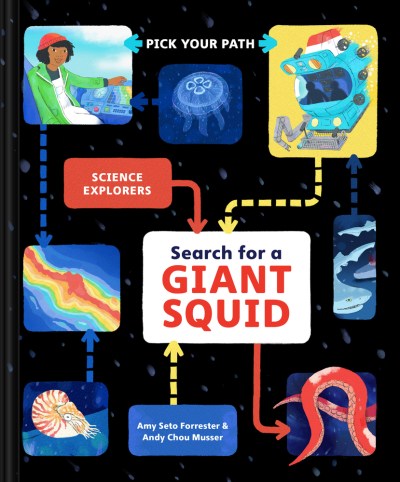 Search for a Giant Squid by Amy Seto Forrester, illustrated by Andy Chou Musser: In this pick-your-path STEM adventure, readers embark on an expedition to the ocean’s twilight zone in search of a giant squid. But giant squids are hard to find. Readers will need to join the expedition and help make choices along the way. (Ages 6-8)
Search for a Giant Squid by Amy Seto Forrester, illustrated by Andy Chou Musser: In this pick-your-path STEM adventure, readers embark on an expedition to the ocean’s twilight zone in search of a giant squid. But giant squids are hard to find. Readers will need to join the expedition and help make choices along the way. (Ages 6-8)- Whale vs. Giant Squid (Who Would Win?) by Jerry Pallott, illustrated by Rob Bolster: This nonfiction reader compares and contrasts two fearsome sea creatures. Kids learn about a whale and a giant squid’s anatomy, behavior, and more. This book is packed with photos, charts, illustrations, and amazing facts. (Ages 6-9)
- Giant Squid by Candace Fleming, illustrated by Eric Rohmann: In this beautiful and clever nonfiction picture book about the giant squid, you’ll explore, both visually and poetically, this hidden creature’s mysterious life. (Ages 6-10)
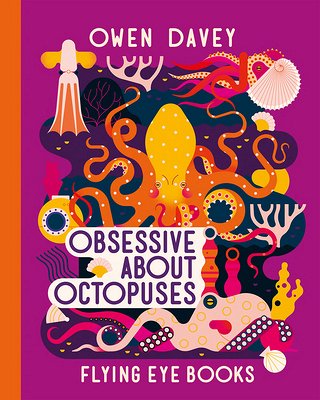 Obsessive About Octopuses by Owen Davey: Dive into this fascinating illustrated guide all about the aliens of the deep. From the truly terrifying giant Pacific octopus to the inventive common octopus, find out where they live, what they eat, and how we can protect them. (Ages 7-10)
Obsessive About Octopuses by Owen Davey: Dive into this fascinating illustrated guide all about the aliens of the deep. From the truly terrifying giant Pacific octopus to the inventive common octopus, find out where they live, what they eat, and how we can protect them. (Ages 7-10)- The Octopus Scientists by Sy Montgomery, photographs by Keith Ellenbogen: Travel to the waters off of Moorea, Tahiti, to study the mind of the mollusk. Follow scientists as they uncover the secrets of its advanced intelligence and learn what these thinking, feeling creatures have to teach us about the oceans, its animals, and ourselves. (Ages 10-12)
Don’t Forget The Grownups!
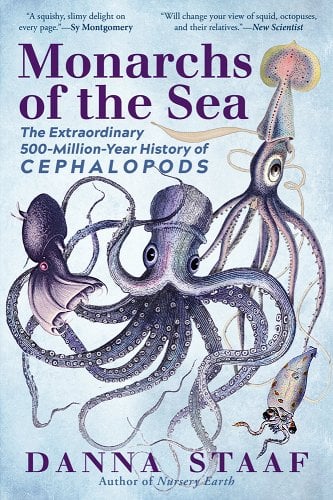 In June 2023 SciFri Book Club read Danna Staaf’s guidebook of our favorite underwater invertebrates through time, Monarchs of the Sea: The Extraordinary 500-Million-Year History of Cephalopods. Cephalopods, Earth’s first truly substantial animals, are still among us: Their fascinating family tree features squid, octopuses, nautiluses, and more. Marine biologist Danna Staaf unspools how these otherworldly creatures once ruled the deep–and why they still captivate us today. Read an excerpt from the book and watch a recording of our interview with the author!
In June 2023 SciFri Book Club read Danna Staaf’s guidebook of our favorite underwater invertebrates through time, Monarchs of the Sea: The Extraordinary 500-Million-Year History of Cephalopods. Cephalopods, Earth’s first truly substantial animals, are still among us: Their fascinating family tree features squid, octopuses, nautiluses, and more. Marine biologist Danna Staaf unspools how these otherworldly creatures once ruled the deep–and why they still captivate us today. Read an excerpt from the book and watch a recording of our interview with the author!
Looking for more books for the squid scientists in your life? Try these!
- Remarkably Bright Creatures by Shelby Van Pelt: After Tova Sullivan’s husband died, she began working the night shift at the Sowell Bay Aquarium, mopping floors and tidying up. Tova becomes acquainted with curmudgeonly Marcellus, a giant Pacific octopus living at the aquarium. Marcellus knows more than anyone can imagine but wouldn’t dream of lifting one of his eight arms for his human captors–until he forms a remarkable friendship with Tova. ALSO AVAILABLE IN SPANISH!
- The Underworld: Journeys to the Depths of the Ocean by Susan Casey: Susan Casey is our premiere chronicler of the aquatic world. For The Underworld she traversed the globe, joining scientists and explorers on dives to the deepest places on the planet, interviewing the marine geologists, marine biologists, and oceanographers who are searching for knowledge in this vast unseen realm. She takes us on a fascinating journey through the history of deep-sea exploration.
Featured Book! The Den The Octopus Built by Randi Sonenshine
View this post on Instagram
Host A Sensational Cephalo-Party
What better way to celebrate science and our oceans than with a Cephalo-Party? Kick off your Cephalopod Week in squid-tastic style with a fun event featuring great decorations, music, food, costumes, and exciting hands-on activities! It’s the perfect way to welcome your learners to the wonderful, and often weird, world of cephalopods. Check out our Pinterest Board full of ideas!
Set The Scene For An Under The Seas Adventure
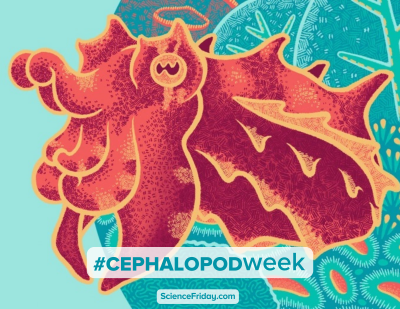
Create a banner. Decorate the walls with colorful posters of octopuses, squid, cuttlefish, and other ocean creatures. Hang colorful paper streamers at the door and windows to simulate seaweed, or use beach toys to create a beach scene. Then get those tentacles tapping with some music by playing the soundtrack to the Little Mermaid or Moana. Be sure to set aside some space for your squid squad to dance or take it up a notch by breaking out your karaoke machine.
Beyond Fish Food: Make Delicious Snacks
If you’re able, prepare some fun snacks for your partygoers! (Just be sure to label everything that may have allergens.) You can keep it simple with goldfish crackers in a fishbowl, Swedish fish and gummy sharks, and blue “ocean” gelatin cups. Mix up a batch of Mermaid Punch using blue raspberry juice, lemon-lime soda, and a splash of pineapple juice or (nonalcoholic) pina-colada mix. You can also cover lollipops with colorful tissue paper and add pipe cleaners for legs and googly eyes to create octopus candies.
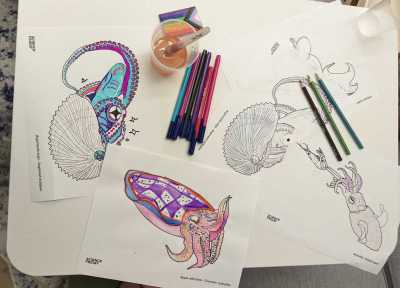
Plan Games, Trivia, And Activities
Create a simple scavenger hunt for participants by hiding pictures of octopuses, squid, cuttlefish, and nautilus around the room and asking them to find them all. Test your guests by planning an easy trivia game. Or craft a bean bag toss or cornhole-style game out of cardboard and make simple rice-filled octopuses out of colorful socks to toss into holes.
Get crafty with cephalopod-inspired activities. Challenge party-goers to imagine what they’ll look like as an octopus or cuttlefish, and provide streamers, pipe cleaners, ribbons, and scrap fabric to create a costume. You can also use Science Friday’s Selfielopod resources to make simple masks. Be sure to take lots of pictures! Or keep it simple by providing young artists with coloring sheets and pencils, markers or crayons.
Squid With ‘Giant’ Eggs Could Be A New Species
Plan A Super Cephalopod Family STEAM Night
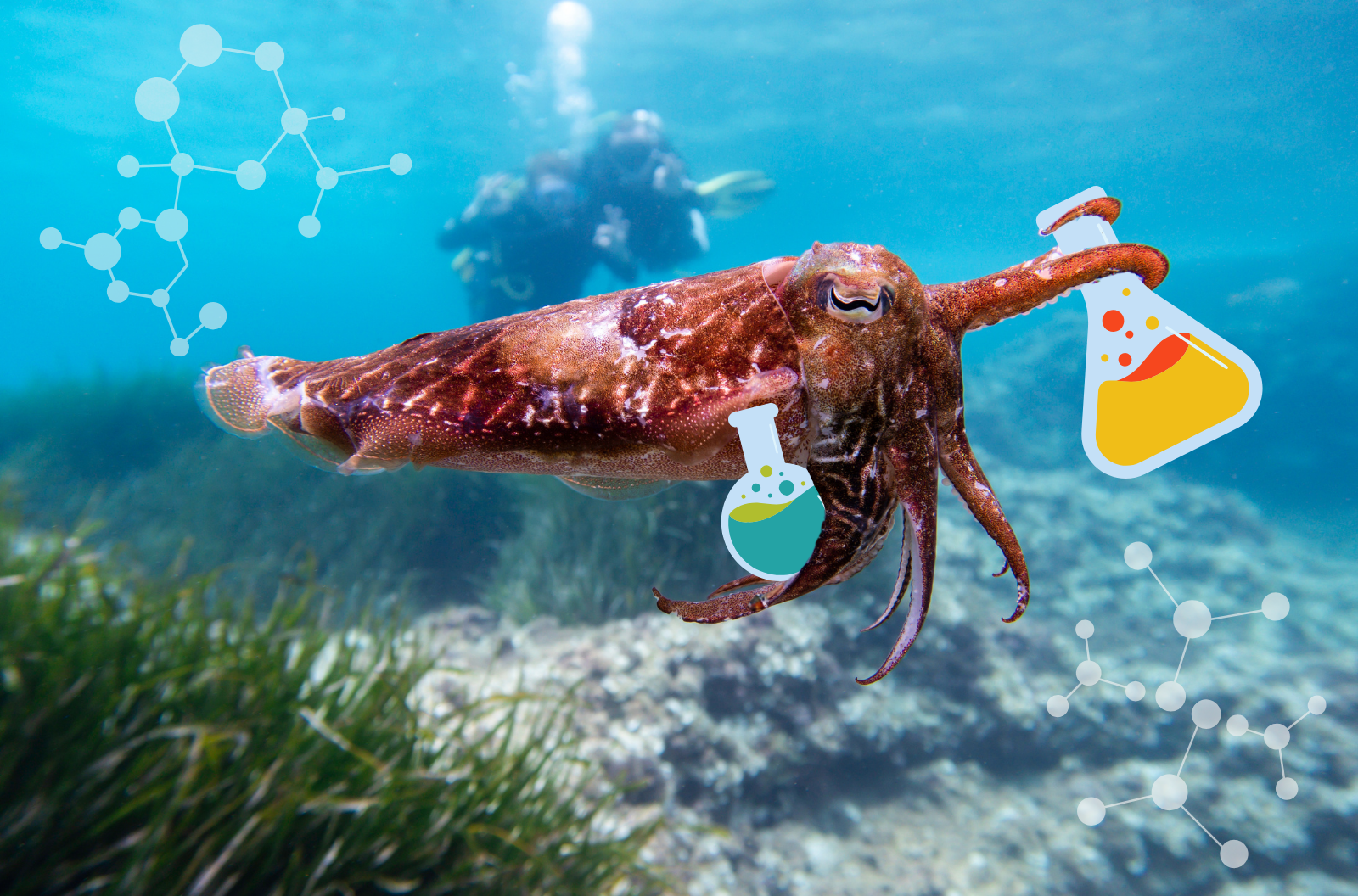
Science Friday has many exciting educational resources featuring hands-on activities, interesting investigations, and exciting science projects that are perfect for any educational setting. It’s a cephalo-palooza of science, technology, engineering, and math. So if you have a squid squad ready for adventure, we have just the right project for you. These activities are great after-school on their own, combined for a Family STEAM Night, or shared at a special weekend event.
Here’s a list of free STEAM resources, by age group:
All Ages
-
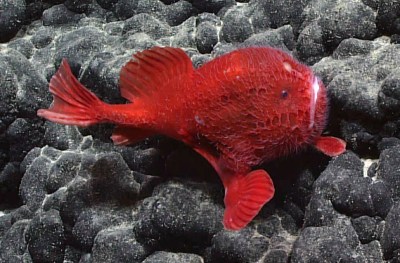
Sea toad or coffinfish (Chaunacops species). Credit: NOAA Office of Ocean Exploration and Research Make A Squid Print: Grab a squid, explore its amazing features, make your own squid print, and use math to determine the diameter of a giant squid eye. (15 minutes to 1 hour)
- High Pressure in the Deep Ocean: Pressure is a huge challenge for deep ocean explorers. Learn how pressure changes with depth and explore its effects on compressible solids in this series of experiments, demonstrations, and real-life data collected aboard the E/V Nautilus. (15 minutes to 1 hour)
- Looking For Life In The Deep Ocean: An Engineering Challenge: How would you look for life in the deepest, darkest parts of the ocean? Get ready to investigate and invent as you prepare to search the seas with this all-ages activity. (60 to 90 minutes)
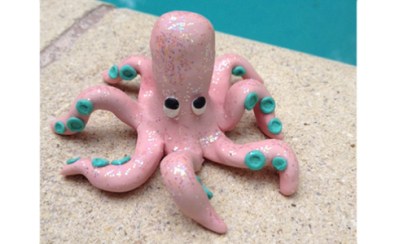
Ages 5 to 10 (Grades K to 5)
- Cephalopod Camouflage: A Beauty That’s Skin Deep: It’s a rock, it’s seaweed, it’s an…octopus? Using this hands-on activity, learn how crafty cephalopods are well adapted to hide in an ocean full of predators. (1 to 2 hours)
- How Does an Octopus Change Its Body to Blend In With Its Environment?: Learn about four different characteristics to describe camouflage—texture, shape, color, and size—and create your own uniquely shaped, textured, colored, and sized “octopus” using clay. (1 to 2 hours)
- Capture The Iridescence Of Camouflaging Cephalopod Skin: Explore the deep, color-changing iridophore and leucophore layers of cephalopod skin to see how they use light to camouflage themselves. (1 to 2 days)
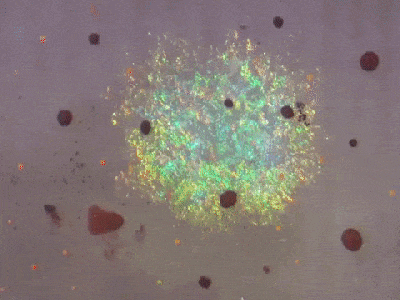
Ages 11 to 13 (Grades 6 to8)
- Model The Texture: Changing Structures of Cuttlefish Skin: Papillae: Learn how cephalopods use papillae on their skin to blend into their surroundings and try it yourself using balloons. (15 minutes to 1 hour)
- Jet-Setting Cephalopods: The most common type of locomotion used by cephalopods is jet propulsion. Can you engineer a system that mimics the speed of a squid? (15 minutes to 1 hour)
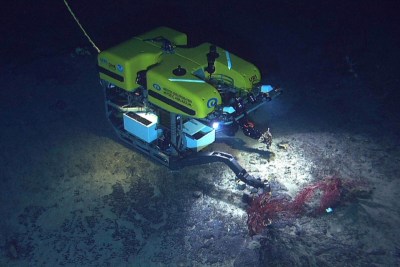
Ages 14 and Up (Grades 9 to 12)
- How Big Was This Squid?: We know giant squid exist, but seeing them in their natural habitat is incredibly difficult. Use a 3D model to work like a scientist and find the mantle length and mass of the giant Humboldt squid. (15 minutes to 1 hour)
- ROVs: The Swiss Army Knife Of The Ocean: These versatile machines keep deep sea explorers above water where it’s safer, but is operating an ROV really just like operating a big remote control car? (1 to 2 hours)
Do you need help adapting a resource for a different age group or shorter time frame? Send a note to educate@sciencefriday.com. We’re here to help!
Squid Science with Sarah McAnulty
View this post on Instagram
Squidflix And Celebrate: Throw A Cephalopod Week Watch Party
Roll out the red carpet! It’s time for a movie screening. There will be octopuses, and squid, and cuttlefish, “Oh, my!”
Preparing For Your Watch Party
Pick your favorite Science Friday Cephalopod Week videos to share with your visitors. Set up comfortable chairs and project the videos on a big screen, just as you might for a movie night. As a special treat, make some popcorn and hand out snack packs of Twizzlers or M&Ms.
Invite your guests to dress in their most glamorous red-carpet-ready outfits or ask them to dress to a theme, like “Under the Sea.” You can make an inexpensive red carpet out of a sheet, flannel, felt, or even painted cardboard. Give every attendee their moment in the spotlight and snap lots of pictures.
Guide A Discussion
After you show each video clip, try asking learners questions and get them talking about what they learned. You might ask, “What is something new you learned while watching this video?” or “What new questions do you have after watching this video?” You can also do a quick poll, asking your cephalopod critics if the clip gets a thumbs up or down.
Video Suggestions For An All-Ages Viewing Party
Here are some popular videos that learners of all ages will love. They’re perfect for showing before a STEAM activity or to spark discussion. You can find even more fascinating videos on our Cephalopod Week YouTube Playlist.
- “Where’s the Octopus?”: When marine biologist Roger Hanlon captured the first scene in this video, he started screaming. (4 minutes, 37 seconds)
- “Run, Octopus, Run!”: Crawling, swimming, squeezing, jetting—the range of movement available to an octopus is impressive. Yet some species occasionally choose to stand up on two arms and “run” backwards. (4 minutes, 51 seconds)
- “Isn’t This Octopus Adorabilis?”: Stephanie Bush of the Monterey Bay Aquarium Research Institute aims to classify and name a presently undescribed deep sea cephalopod. (5 minutes, 15 seconds)
- “The Vampire Squid From Hell”: Although its Latin name translates as “the vampire squid from hell,” the vampire squid is actually a gentle steward of the ocean’s depths, gracefully foraging on marine detritus. (4 minutes, 33 seconds)
- “Caring for Cuttlefish”: Using recycled soda bottles, modified cradles, and knowledge of each species’ husbandry, the Monterey Bay Aquarium staff have nurtured to adulthood 95 percent of the cuttlefish eggs spawned. (4 minutes, 57 seconds)
Why Do Cephalopods Make Ink?
Join Science Friday’s Sea Of Support
 We’re building a Sea of Support with your help. These donations help sustain our programming and support fun projects like Cephalopod Week. Thank you for helping us build a Sea of Support for science!
We’re building a Sea of Support with your help. These donations help sustain our programming and support fun projects like Cephalopod Week. Thank you for helping us build a Sea of Support for science!
An Ocean Of Digital Resources
Find more fun ideas for activities, resources, and printable materials at:
- Cephalo-Party Pinterest Board with party ideas and crafts
- Cephalopod Week Google Drive with printable materials and media
- Cephalopod Week YouTube Playlist with many great videos
- Cephalopod Week Spotlight Page with great articles and stories
Credits:
Lesson by Sandy Roberts
Copyediting by Ashley Schreyer
Digital Production by Sandy Roberts
Educator's Toolbox
Meet the Writer
About Sandy Roberts
Sandy Roberts is Science Friday’s Education Program Manager, where she creates learning resources and experiences to advance STEM equity in all learning environments. Lately, she’s been playing with origami circuits and trying to perfect a gluten-free sourdough recipe.

